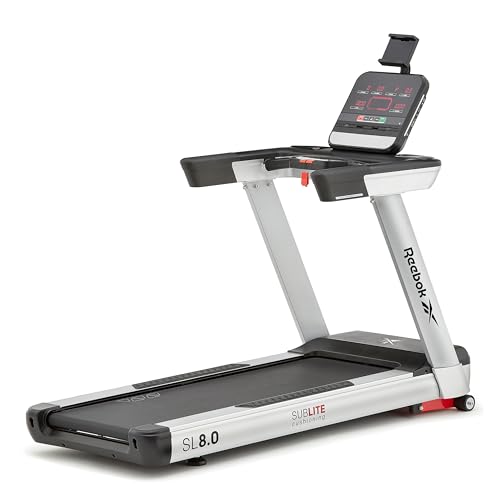A Step-By Step Guide To Selecting Your Treadmill Without Electricity
The Allure of Treadmills Without Electricity: A Comprehensive Guide
In a world increasingly dominated by high-tech fitness gadgets, the simpleness and practicality of a treadmill that doesn't require electricity might seem like a throwback. However, treadmills without electricity— often described as “manual treadmills”— have gained substantial popularity among fitness lovers looking for a more straightforward, environment-friendly exercise alternative. This post digs into the myriad advantages, functions, and considerations surrounding manual treadmills, as well as answering common concerns from potential buyers.
What is a Manual Treadmill?
A manual treadmill is a piece of workout devices that allows users to stroll or run without needing electrical power. Instead of motorized treadmills that move the belt for you, manual treadmills count on the user's own effort to propel the belt forward. Here's a quick contrast between manual and motorized treadmills:
Feature
Manual Treadmill
Motorized Treadmill
Source of power
None
Electricity required
Personnel Mechanism
User-powered
Motor-driven
Cost
Typically more affordable
Generally more pricey
Mobility
Extremely portable
Typically much heavier, less portable
Maintenance
Low
Needs more maintenance
Exercise Intensity
Greater (more effort)
Can be adjusted
Advantages of Using a Manual Treadmill
Economical:
- Manual treadmills are typically more affordable than their electrical counterparts. With a lower preliminary investment and no continuous electricity costs, these treadmills can be an excellent alternative for budget-conscious people.
Eco-Friendly:
- As there are no motors or electrical parts included, manual treadmills are a sustainable choice. They don't take in fossil fuels and leave a smaller sized carbon footprint.
Versatile Workout:
- Because they require the user to produce their own momentum, manual treadmills can use more extreme workouts, ideal for those looking to increase their stamina and strength.
Portability:
- Manual treadmills are typically lighter and easier to transfer. They enable users to easily keep them away or move them from one area to another.
Minimized Risk of Injury:
- By permitting for a more natural running movement, manual treadmills can assist reduce the threat of injury compared to motorized options. Users have control over their speed and can stop or slow down instantly.
Secret Features to Consider
When considering a manual treadmill, certain features must be considered:
- Belt Quality: Look for a non-slip, long lasting surface that provides enough grip for safety during exercises.
- Incline Levels: Many manual treadmills come with adjustable incline features. Higher slopes can increase exercise strength.
- Dimensions: Space can be a restriction, so taking a look at the treadmill's footprint is crucial.
- Weight Capacity: Always check the maker's weight recommendations to ensure security and durability.
- Display Monitor: Some manual treadmills include fundamental screens for tracking elapsed time, range, and calories burned.
Feature
Description
Belt Quality
Non-slip and long lasting materials for security
Incline Levels
Adjustable settings for increased workout difficulty
Dimensions
Size and weight for ease of storage and transportation
Weight Capacity
Ensure the treadmill accommodates the user's weight easily
Show Monitor
Optional efficiency tracking includes
Picking the Right Manual Treadmill
Offered the range of manual treadmills available on the marketplace, picking the right one involves examining personal physical fitness goals and requirements. Here's a simplified list to guide customers:
- Assess your fitness objectives: Are you aiming for weight-loss, endurance, or basic physical fitness?
- Consider the readily available space: Ensure the treadmill will fit well in your designated workout area.
- Check for functions: Look for adjustable incline settings or included innovation such as a distance tracker.
- Research study brand names and reviews: Read about the experiences of other users to assess the reliability and toughness of the model you're considering.
- Set a budget plan: Compare different models while keeping your budget in mind.
Frequently Asked Questions (FAQ)
1. Are manual treadmills appropriate for all physical fitness levels?
Yes, manual treadmills deal with numerous fitness levels. Beginners can begin at a slower rate, while more advanced users can increase strength and speed.
2. How do manual treadmills impact calorie burn as compared to motorized ones?
Manual treadmills may result in greater calorie burn throughout exercises, as users need to put in more effort to move the belt.
3. Do Manual Incline Treadmill need to assemble a manual treadmill?
Many manual treadmills come partially assembled, but you'll likely require to complete some assembly depending upon the design.
4. Can I carry out interval training on a manual treadmill?
Definitely! Manual treadmills are excellent for interval training given that users can quickly change their rate and start/stopping movements.
5. How do I keep a manual treadmill?
Maintenance is basic: regular cleansing of the belt and frame, inspecting for wear and tear, and ensuring empty storage when not in usage.
Manual treadmills offer numerous advantages, making them an attractive choice for lots of fitness enthusiasts. Their energy-efficient style, combined with the ability to supply efficient workouts, has actually cemented their location in home physical fitness regimens. With a clear understanding of their functions and advantages, individuals can make an informed decision about whether a manual treadmill is the ideal choice for their health journey.
The straightforward appeal of manual treadmills— combined with their cost-effectiveness and sustainability— ensures they stay appropriate in today's fitness market, supplying a compelling option to electric designs.
